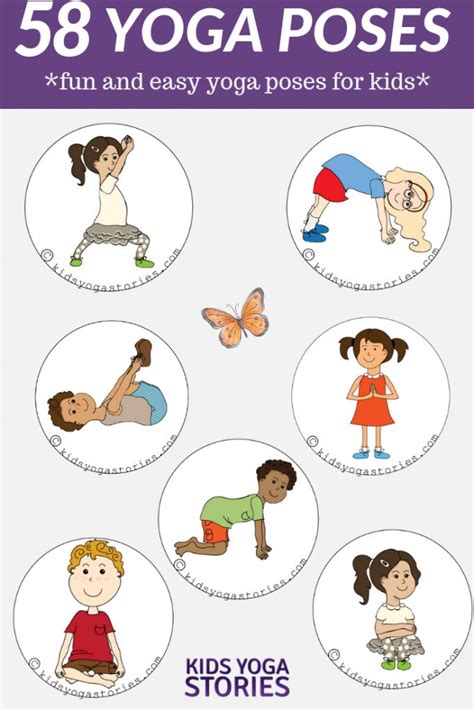Simple and Fun Yoga for Kids: A Beginner’s Guide to Get Started Today
Yoga can be an incredible activity for kids, helping them develop physical strength, mental focus, and emotional balance. While yoga is often associated with adults, it’s just as beneficial for younger children. By introducing fun and easy yoga routines, you can get kids excited about fitness while cultivating mindfulness in a playful way. This guide is designed for parents, educators, or anyone interested in making yoga an enjoyable experience for children.
Introduction: Why Yoga is Great for Kids
Yoga is more than just a physical activity—it’s a holistic practice that incorporates body, mind, and breath. Kids who practice yoga regularly can enjoy numerous benefits such as improved flexibility, strength, concentration, and emotional resilience. In a world where children are often overstimulated, yoga offers them a chance to slow down and connect with their inner selves. Furthermore, yoga for kids is a wonderful way to teach relaxation techniques that can help them in school and in life. The key is making yoga fun and engaging, so they look forward to practicing it.
Key Concepts: Core Elements of Yoga for Kids
- Mindful Breathing: Introducing kids to deep breathing exercises helps them control their emotions and focus.
- Body Awareness: Teaching kids how to engage different parts of their body during poses develops their sense of balance and coordination.
- Stretching and Flexibility: Yoga enhances children’s flexibility, reducing the risk of injury and improving posture.
- Relaxation Techniques: Learning to calm their minds helps kids handle stress and anxiety more effectively.
- Imagination and Play: To make yoga more interesting, we can incorporate stories, animals, and creative movements into the practice.
Historical Context: How Yoga Became a Popular Kids’ Activity
Although yoga is an ancient practice originating from India over 5,000 years ago, it has been adapted over time to meet modern needs. The concept of introducing yoga to children emerged in the late 20th century as educators and parents sought alternative methods for supporting child development. Yoga for kids began to gain traction in schools, wellness programs, and even therapy sessions due to its wide-ranging benefits. Today, yoga programs for children are integrated into school curriculums, community centers, and extracurricular activities worldwide.
Current State Analysis: The Growing Popularity of Kids’ Yoga
In recent years, yoga for children has surged in popularity as parents and teachers recognize the positive impact it has on child development. Many schools now incorporate short yoga sessions to help kids reset between lessons, manage hyperactivity, and foster a calm learning environment. Additionally, yoga apps and YouTube channels focused on kids are widely available, making it easier than ever for families to practice together at home. Despite this rise in popularity, some challenges persist, such as making yoga classes more accessible to kids from all socio-economic backgrounds and ensuring they are engaging and appropriate for various age groups.
Practical Applications: How to Start Yoga with Your Kids
Starting yoga with kids doesn’t require any expensive equipment or specialized skills. Here’s a simple approach to get them going:
- Create a fun environment: Use colorful mats, props, or play their favorite music to make the setting enjoyable.
- Begin with animal poses: Kids love mimicking animals! Try poses like the cat-cow, downward dog, and cobra to keep things playful.
- Keep it short: Start with sessions as short as 5-10 minutes and gradually build up as they get more comfortable.
- Use storytelling: Incorporating stories or adventures while they move through poses keeps them engaged and excited.
- End with relaxation: Help children wind down with a simple meditation or breathing exercise, teaching them how to calm their minds.
Case Studies: Success Stories of Yoga for Kids
Let’s look at some inspiring examples where yoga transformed the lives of children:
| Case Study | Results |
|---|---|
| Mindfulness Programs in Schools | Students practicing yoga in class showed a marked improvement in focus, behavior, and academic performance. They also displayed reduced anxiety levels. |
| Yoga for Special Needs Children | Children with autism who participated in yoga programs improved their social skills, emotional regulation, and physical coordination. |
| Family Yoga at Home | Parents reported improved communication and bonding with their children through family yoga sessions, as well as reduced screen time. |
Stakeholder Analysis: Who Benefits from Kids’ Yoga?
The practice of yoga for children impacts a wide range of stakeholders:
- Parents: Yoga provides an opportunity for quality time with their kids while promoting physical health and emotional resilience.
- Educators: Teachers benefit by integrating yoga into classrooms, which can lead to improved student focus and less disruptive behavior.
- Healthcare Professionals: Pediatricians and therapists often recommend yoga for managing childhood stress, ADHD, and anxiety disorders.
- Communities: Neighborhood yoga programs for kids promote inclusion, fitness, and mental well-being, making a positive social impact.
Implementation Guidelines: Making Yoga Fun and Accessible for Kids
Here are some tips to ensure a successful introduction of yoga to kids:
- Use age-appropriate language: Explain poses and breathing exercises in a way that children can easily understand.
- Keep sessions playful: Incorporate games, stories, or music to maintain their interest.
- Set realistic expectations: Don’t expect children to sit still or meditate for long periods right away. Start with basic poses and build gradually.
- Provide variety: Keep the practice fresh by switching up the poses or introducing new challenges as they progress.
- Offer encouragement: Positive reinforcement keeps kids motivated and builds their confidence.
Ethical Considerations: Ensuring a Safe and Respectful Practice
When introducing yoga to kids, it’s crucial to address the following ethical concerns:
- Body Positivity: Encourage children to listen to their bodies and avoid comparing themselves to others. Yoga is a non-competitive practice that fosters self-acceptance.
- Cultural Sensitivity: While teaching yoga, be mindful of its origins and ensure that the practice is respectful of its cultural significance.
- Consent and Boundaries: Always ask for children’s consent before assisting with poses or adjustments. Empower them to set their own boundaries.
Limitations and Future Research: Where Kids’ Yoga Needs to Grow
Despite the many benefits of kids’ yoga, there are still some limitations and areas for future exploration:
- Limited Access: Not all children have access to yoga programs, especially in underserved communities. Future research should explore methods for making yoga more widely available.
- Standardization of Curriculum: As kids’ yoga becomes more popular, it’s important to ensure that teachers are properly trained to lead classes that are safe and age-appropriate.
- Long-Term Studies: More research is needed to assess the long-term effects of yoga on children’s physical and mental health.
- Inclusivity: There is a growing need to make yoga inclusive for children of all abilities, ensuring that children with disabilities or special needs can participate fully.
Expert Commentary: Insights on the Future of Yoga for Kids
According to child development specialists, incorporating yoga into a child’s routine can lead to lifelong benefits. Experts agree that starting yoga at an early age teaches kids valuable tools for handling stress and maintaining physical health. Pediatricians are increasingly recommending yoga as part of holistic child wellness, particularly for managing conditions such as ADHD, anxiety, and autism spectrum disorders. With more schools adopting mindfulness programs, the role of yoga in child development is expected to continue expanding, making it an essential tool for future generations.








